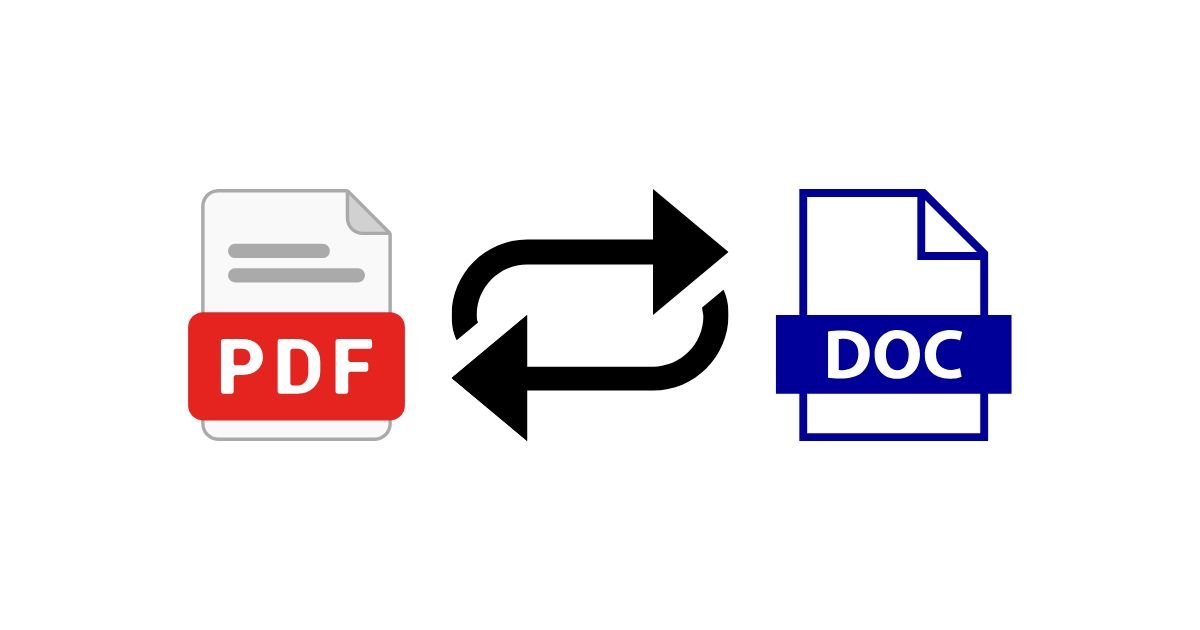Quick start: the safest path #
- Start with a clean source PDF. If it’s a scan, run OCR first (see below).
- Use a high-quality converter (try our PDF Converter) to export to
.docx. - Open in Word and apply styles (Heading 1/2, Normal) to normalize spacing.
- Fix tables and images (set “Preferred width” to % and “In line with text”).
- Export back to PDF with fonts embedded and “Optimize for electronic distribution”.
Why PDF → Word can get messy #
- PDFs are final-form (positioned boxes). Converting to flow-based DOCX is an interpretation.
- Fonts missing → Word substitutes fonts; spacing and page breaks shift.
- Tables drawn as shapes → cells become misaligned or turn into images.
- Scanned PDFs → just pictures until you run OCR; no “real” text exists.
Good news: the right converter + a 1-minute cleanup gets you 95% there.
Best methods to convert PDF ↔ DOCX #
1) ToolsUseful PDF Converter (fast & privacy-friendly)
Go to PDF Converter. Upload your file and export to DOCX.
We aim to preserve text, lists, links, and tables while keeping images compressed for editing speed.
2) Microsoft Word (Open → PDF)
Open Word → File → Open → pick your PDF. Word converts it to an editable DOCX. Great for text-heavy docs. You may still need to fix tables and headings.
3) Google Docs (import PDF)
Drive → Upload PDF → Open with Google Docs. Handy in a browser, but complex layouts may shift more than Word.
4) Adobe Acrobat (Export PDF)
Use Export PDF → Word. Often excellent with tricky layouts—but a paid tool in many cases.
How to preserve tables, fonts, images, and lists #
Tables
- Right-click table → Table Properties → set width in % (not fixed px) for reflow.
- Remove extra nested tables; combine rows/columns rather than stacking.
Fonts
- Install the original fonts if you have them. If not, pick a close match (e.g., Calibri ↔ Source Sans).
- Use Styles (Heading 1/2/3, Normal) instead of manual font sizing; this stabilizes spacing.
Images
- Set images to In line with text to avoid unexpected jumps; use Square wrap only if needed.
- Compress to 150–220 ppi for screen PDFs; 300 ppi for print. Avoid re-saving lossy images multiple times.
Lists
- Convert fake bullets (● as text) to true Word lists for consistent indent/alignment.
- Keep list styles simple (● or 1.)—exotic bullets can shift on export.
Scanned PDFs & OCR (make images become real text) #
If your PDF is a scan, it’s just images. Run OCR first:
- Try our PDF Converter with OCR enabled (if available in your region).
- Or use Acrobat: Scan & OCR → Recognize Text. Choose the correct language.
Then convert to DOCX. Without OCR, you’ll get a DOCX full of images, not editable text.
Export back to PDF the right way #
- In Word: File → Save As → PDF (or Export → Create PDF/XPS).
- Embed fonts when possible (“ISO 19005-1 (PDF/A)” can help for archiving).
- For on-screen PDFs, choose Optimize for electronic distribution and 150–220 ppi images.
- Add document properties and a title (helps SEO/metadata when shared).
Need to assemble a final pack? Use Merge PDF and Split PDF.
1-minute cleanup checklist (after conversion) #
- Apply Heading 1/2 to titles and sections.
- Normalize body text to Normal style, 1.15–1.2 line spacing.
- Set images In line with text; set alt text if exporting for accessibility.
- Fix tables: set % width, center align header row, avoid nested tables.
- Run Spelling & Grammar once; scan for weird characters from OCR.
Troubleshooting #
Text overlaps or jumps around: switch images to In line with text; remove text boxes.
Tables exploded into shapes: recreate the table and paste cell content; it’s faster than fighting shapes.
Fonts look off: install the original font or choose a metrically similar alternative; reapply styles.
File size too big: compress images on export; avoid huge background images.
FAQ #
What’s the best way to convert PDFs with heavy tables?
Try Acrobat Export or our PDF Converter, then fix column widths in Word using % sizes.
Can I keep the exact same fonts?
Yes—if the fonts are installed or embedded. If missing, Word substitutes them; install the originals when possible.
How do I make the final PDF small but sharp?
Export with 150–220 ppi images and keep vector graphics (logos, charts) as vectors when possible.
Previous
Compress Images Without Losing Quality (JPG, PNG, WebP)
Next
QR Codes that People Actually Scan: Size, Color, Logo
